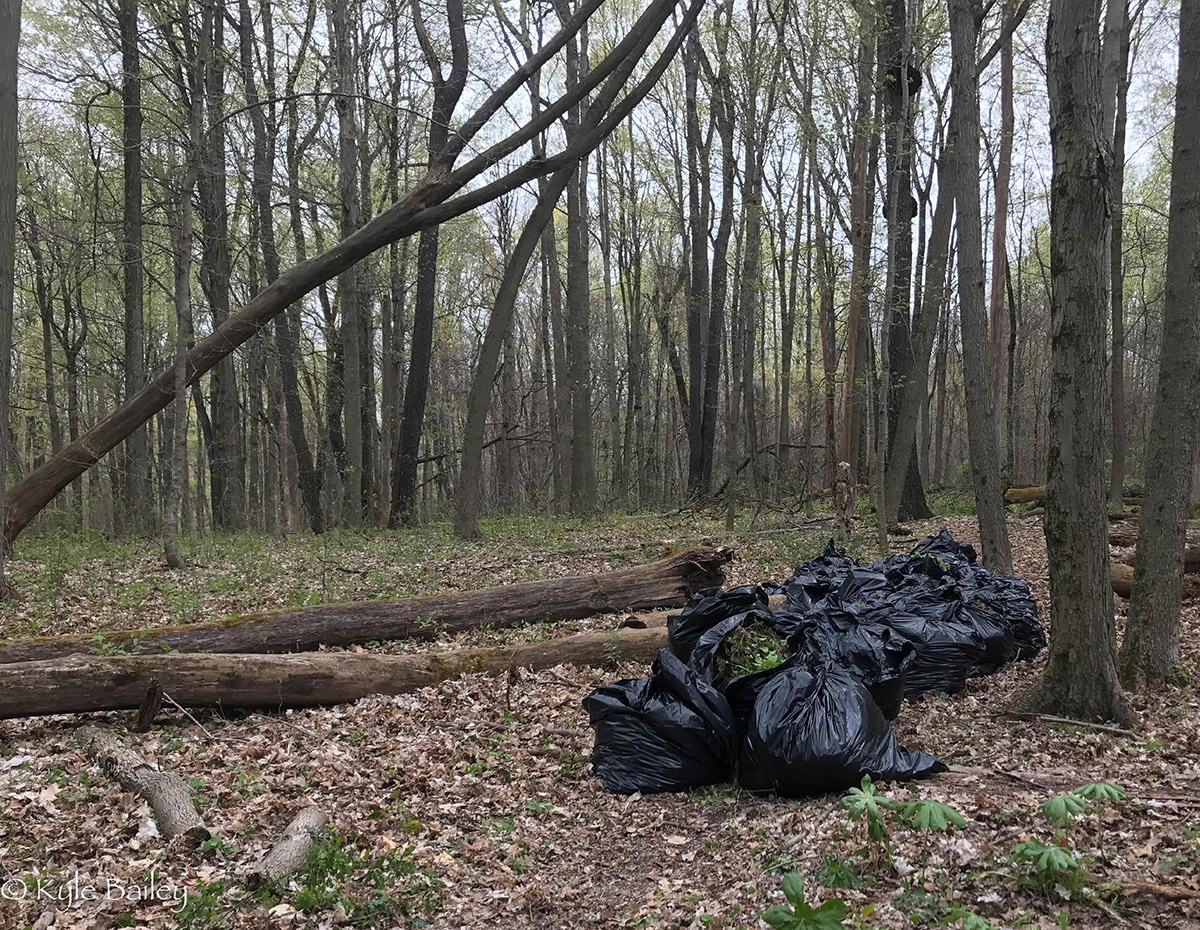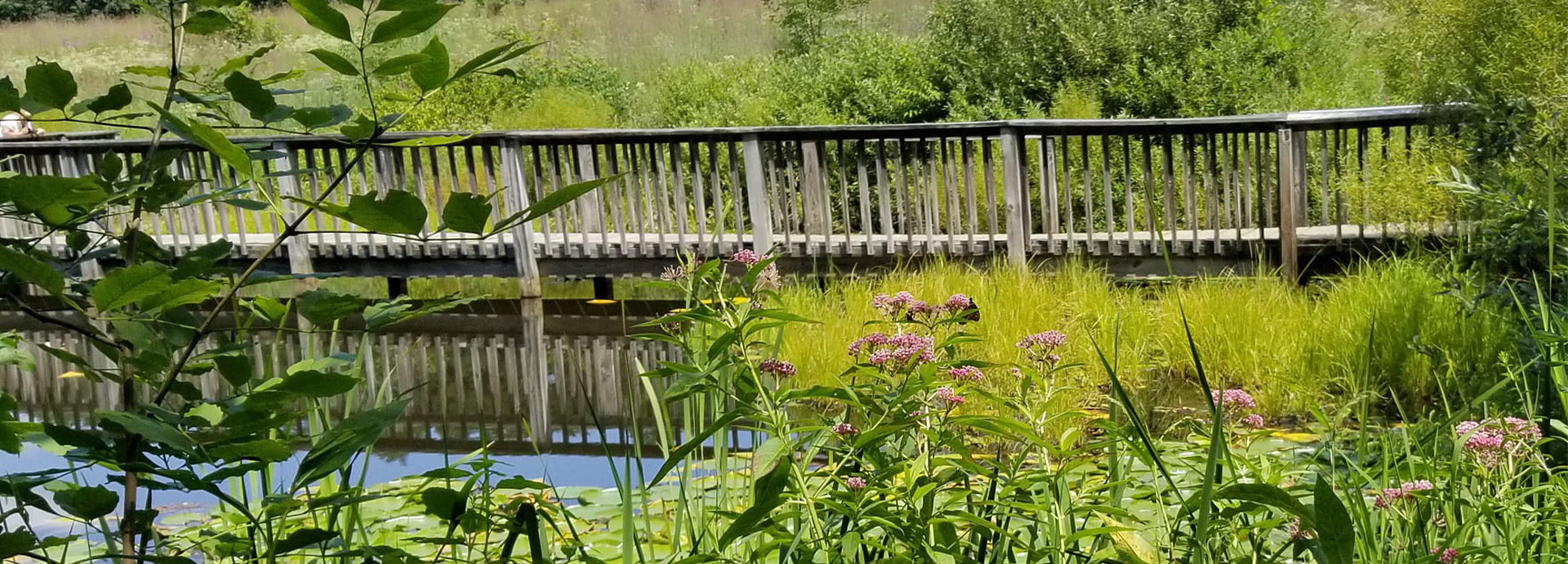
Richland County Park District
Invasive Plant Management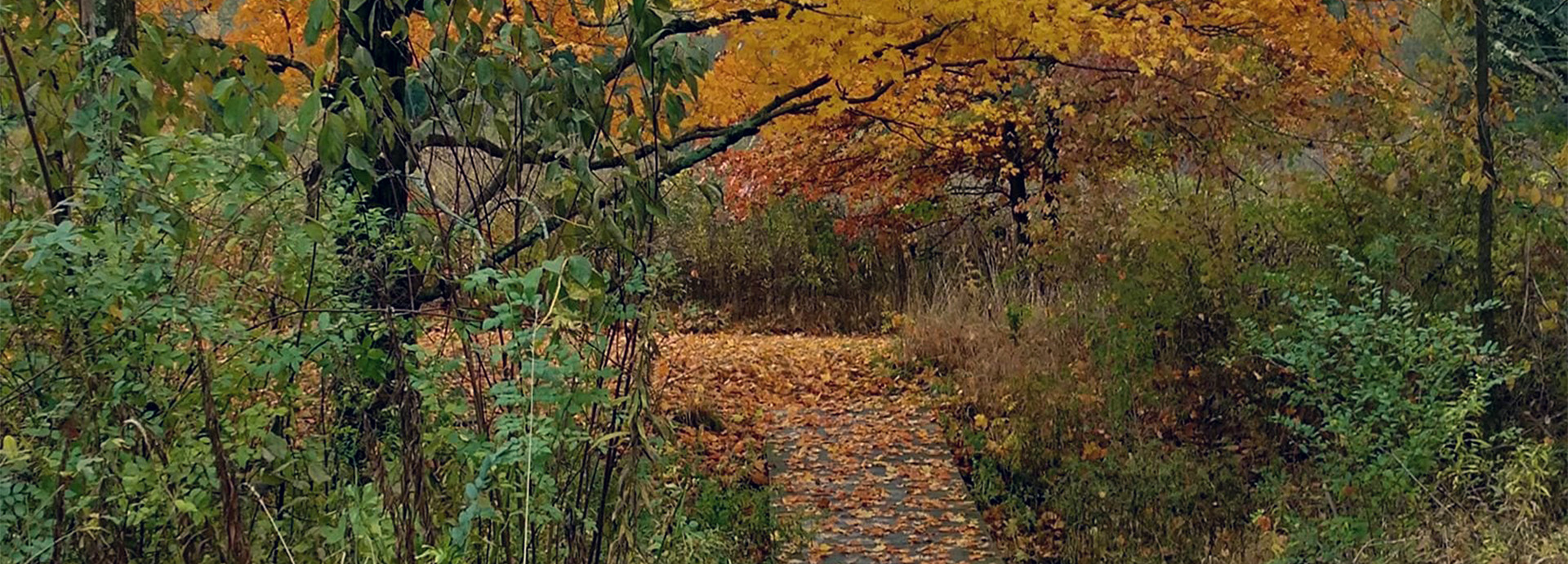
Richland County Park District
Invasive Plant Management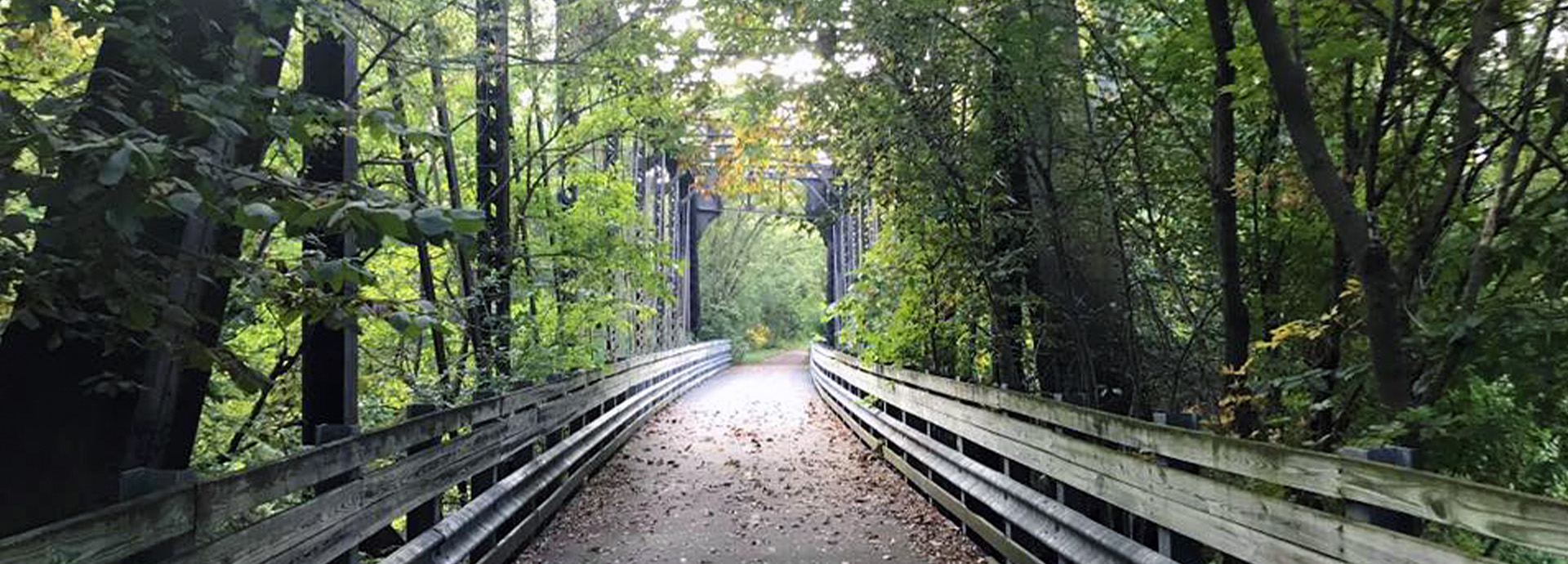
Richland County Park District
Invasive Plant Management
Richland County Park District
Invasive Plant Management
Invasive plants can have severe negative effects on native ecosystems around the world, degrading ecological integrity and creating devastating consequences that may be felt for generations. Although invasive plants and wildlife can be native, more times than not, when referring to flora and fauna as being invasive we are speaking about non-native or exotic species. Of the 700 or more non-native plants found in the wild in Ohio, less than 100 of them are known to be aggressive invasive species that cause problems in natural areas. The worst of these species degrade Ohio's forests and remaining prairie remnants and wetlands. The RCPD has long been battling a number of invasive plant species that are destroying natural ecosystems and eliminating critical habitat, food sources, and nesting areas for birds, mammals, and insects.
In 2015, the RCPD began a management program with the goal to significantly reduce the impact of the top ten invasive species invading and degrading park habitat. Volunteers and interns are integral stewards that assist the natural resource management staff in accomplishing our invasive plant management needs.
Natural resource management staff routinely hold monthly stewardship programs and occasional workshops to engage and educate people about invasive species and the impact they have on the natural environment. The RCPD is a hub for north-central Ohio invasive plant management and has proudly partnered with the Ohio Invasive Plant Council (OIPC), the forefront organization in Ohio combating invasive plant species, to provide accessible workshops encompassing a variety of topics, including invasive plant management techniques, purchasing and planting native alternatives, and observing live invasive specimens.
Make sure to check our event calendar for upcoming stewardship programs or workshops.
Invasive Plants in the Richland County Park District
What Is an Invasive Plant?
Invasive plants usually refer to non-native or exotic plants that degrade the quality of native ecosystems by dominating wildlife habitat and creating monocultures through excessive seed production and dispersal, which ultimately leads to lower biodiversity. RCPD properties encompass many native flora and fauna that are constantly under attack from invasive plants that can have devastating negative impacts on native populations. Most native animals will not eat these opportunistic invasive species, resulting in an unchecked and unbalanced ecosystem that requires scrupulous attention from natural resource management staff to manage effectively and efficiently.
Invasive Plants in Ohio
The Ohio Invasive Plant Council engages with the Ohio Department of Agriculture (ODA), policy makers, natural resource managers, horticulturists, and other stakeholders to formulate and enact Ohio's invasive species laws. For educational materials, definitions, and fact sheets on Ohio's top invasive plant species, check out the OIPC website.
Invasive Plants in RCPD Parks
Every RCPD park has invasive plant infestations that require attention from natural resource management staff. Invasive plant management constitutes the bulk of management priorities in RCPD parks, coinciding with our vision to protect and preserve Richland County's natural resources for present and future generations. The fragmentation of wildlife habitat in north-central Ohio combined with the interconnectedness of lakes, rivers, and streams and the lack of education or public awareness for invasive plant management has allowed for an overabundance of invasive species to infiltrate, create strongholds, degrade ecosystems, lower biodiversity, and spread rapidly among the region. This creates an evolutionary arms race between native and invasive species that is an ongoing battle for dominance over our natural areas and manicured landscapes.

Here is a list of the Top Ten invasive species of highest priority on RCPD properties:
1. Amur, Morrow-Bush, Tartarian-bush honeysuckles (Lonicera spp.)
2. Glossy Buckthorn (Frangula alnus)
3. Garlic Mustard (Alliaria petiolata)
4. European Privet (Ligustrum vulgare)
5. Autumn Olive (Elaeagnus umbellata)
6. Reed Canary Grass (Phalaris arundinacea)
7. Purple Loosestrife (Lythrum salicaria)
8. Multiflora rose (Rosa multiflora)
9. Tree-of-heaven (Ailanthus altissima)
10. Narrow Leaved Cattail (Typha angustifolia)
Management
Invasive Management Philosophy
RCPD natural resource management staff, interns, and volunteers use an holistic first approach when managing invasive plants on park property. Our ultimate goal is to have as minimal of a negative impact on the environment as possible by managing invasive species mainly through non-chemical methods such as manual and mechanical removal. With this being said, due to resource constraints, sometimes it is neither practical nor cost efficient for staff to manage using these methods and chemicals must be used. The RCPD employs licensed commercial herbicide applicators with the knowledge and skill to use the best management practices required by the Ohio Department of Agriculture (ODA) and Ohio Environmental Protection Agency (EPA).
Management Techniques
Natural resource management staff use an Integrated Pest Management (IPM) approach when managing invasive plants in RCPD parks. This means we use a combination of management methods to achieve our goal and be most efficient. Total eradication is often unachievable, unless there is a small isolated infestation that has been managed immediately. Although ideal, it is often impractical and not cost effective to strive for total eradication. A more realistic goal that we strive for is suppression of invasive species to a manageable level, allowing our most biologically significant and diverse natural areas to flourish.
Each RCPD park has its own unique challenges to navigate when managing for invasive species. Although management plans for each park are different, each is framed using the same priorities and often similar management techniques.
Management techniques employed by RCPD staff to manage invasive species include manual removal, mechanical removal (bush mowing and honeysuckle popper), and chemical application. These techniques are used in a variety of habitats found in RCPD parks, including forests, grasslands, prairies, wetlands, and streams. Efforts are focused on targeting areas of high ecological or biological significance or which host rare native species.
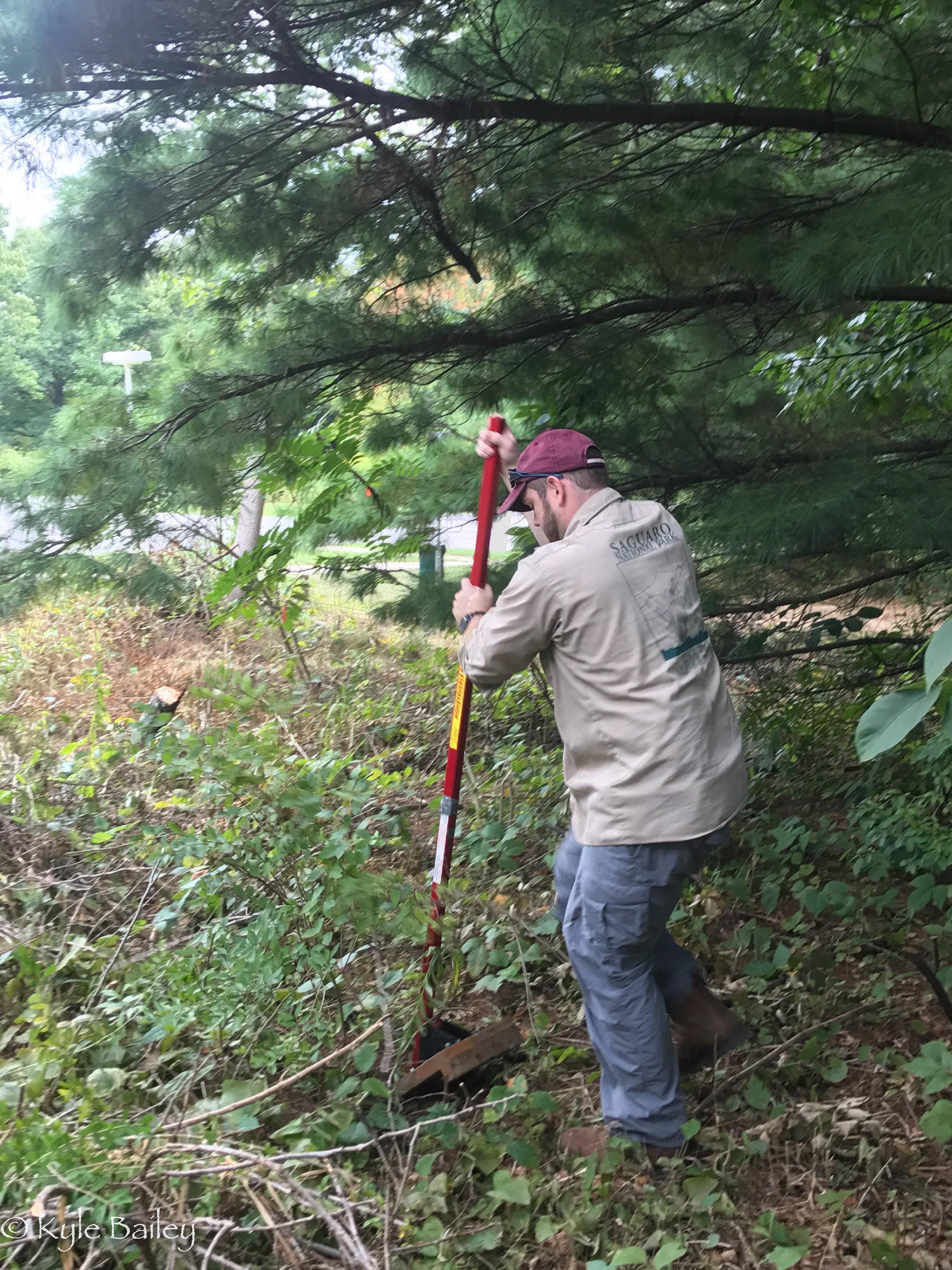
The species mentioned above have been identified as causing the most harm to biological integrity and degradation to ecologically significant habitat. Target species priority for natural resource management staff is dependent on the seasonality (phenology) of the species and its susceptibility to removal efforts. There are approximately 10 secondary target invasive species that are also managed, and as staff, interns, and volunteers continue to survey RCPD properties, new invasive species may be added to the list.
Where Do Invasive Plants Come From? How Do They Get Here?
Non-native or exotic plants are species that are introduced into an area where they do not historically or naturally occur. Not all non-native species are invasive, but many of the invasive species that do exist in a given area tend to be non-native in origin. There are many agents of transportation that allow the spread of invasive species. Most often invasive species are unintentionally introduced to a given area.
In a historical context, many that exist in Ohio today were brought here by explorers during the early days of settlement, bringing familiar food sources and plants from their country of origin. However, this trend still exists today with exotic plants being introduced into areas as ornamental plants, for soil stabilization, or for other reasons. Ornamental plants are used in the horticulture trade and are bred for pest resistance, disease resistance, and abundant flower or fruit production. Exotic plants that do become invasive often have a competitive advantage over native species due to the lack of pests or diseases from their home country that afflict them. This competitive advantage results in an unbalanced ecosystem that allows invasive species to invade natural areas and prevent native species from flourishing.
Can Wildlife in the Park Adapt To Coexist With Invasive Species?
Native wildlife is occasionally able to adapt to coexist or even thrive in the presence of invasive species. Most times, however, this is not the case. Many species have specific niches that they fill in a particular ecosystem. Niches require specialized diets, habitats, breeding strategies, or other factors related to life history. When invasive species are introduced into an ecosystem the consequences can be severe, leaving a reverberating path of destruction and reducing overall biodiversity. When biodiversity in a given ecosystem is compromised there is a risk of the formation of monocultures. Monocultures form when invasive species or aggressive plants overtake an ecosystem displacing native vegetation reducing biodiversity. Monocultures fundamentally cannot sustain plant and animal diversity. Managing monocultures to restore native plant and animal diversity is essential to curbing habitat destruction and loss of biodiversity.
Why Does the Richland County Park District Use Herbicide? Is It Harmful to the Environment and Wildlife?
The RCPD employs a holistic approach when dealing with invasive species removal. This means that RCPD natural resource staff and volunteers, when possible, manually remove vegetation by pulling it, such as with Garlic Mustard (Alliaria petiolata). However, when utilizing tax payer dollars, manual removal is often times not the most cost-efficient or practical method in managing invasive species. Aggressive invasive species such as Reed Canary Grass, Narrow-Leaved Cattail, or Common Privet have extensive root systems that reproduce vegetation and make manual removal nearly impossible.
RCPD staff use Glyphosate, a broad-spectrum systemic herbicide, for upland and wetland plants because of its low toxicity levels for mammals, birds, fish, and reptiles. Glyphosate is a water based herbicide which, once applied to a target species, tends to absorb quickly and leech very little. When Glyphosate makes contact with the soil it is absorbed, rendering the herbicide immobile as soil microbes break it down. Herbicide is generally applied prior to when fruiting takes place to prevent the spread of chemicals to other wildlife. The RCPD employs trained staff and service members in the commercial application of herbicide on government property. Staff members and trained service members are very selective about when, where, and how much herbicide is released onto target species.
The treatment of invasive species near water sources requires an herbicide registered for aquatic use. It is important to protect wetland habitats because of the myriad of benefits they provide the environment as aquifers, as water filtration systems removing sedimentation and excess nutrients, and as rich habitats for a wide array of biodiversity. Wetlands are some of the most productive ecosystems in the world and are undervalued for their importance to the environment. Wetlands are highly susceptible to the infiltration and infestation of aggressive invasive species like Phragmites (Phragmites australis), Reed Canary Grass (Phalaris arunidacea), and Narrow-Leaved Cattail (Typha angustifolia).
What Do You Do With All the Pulled Plants?
All vegetation that is pulled is collected, recorded, and disposed of. Garlic Mustard that is in its first year or that has not gone to seed is pulled, set aside, and left on site to decompose. Second year mature Garlic Mustard is collected in black gallon garbage bags where it is then disposed of in the dumpster.
Woody vegetation that is removed is collected and transported to a designated waste area where, if it does not contain viable fruit it is chipped, or if it does contains viable fruit it is burnt. This is essential to prevent invasive species from germinating and continuing to spread.
What Happens to the Treated Area Once Invasive Species Are Removed?
Once invasive species are removed from a high priority target area, there are a few ways in which the area is able to recover. Site sensitivity will determine which recovery method is appropriate. Typically, at GNC, the method employed is a holistic natural recession approach allowing for native plants in the seed bank to sprout and flourish. On other RCPD properties with more fragile ecosystems, other land management techniques are considered more appropriate. It is essential following an invasive removal to map the target area using ArcGIS technology and then continue to monitor the target area to determine the effectiveness of removal efforts.
When dealing with highly sensitive ecosystems that are considered rare or that home rare flora and fauna, a different approach may be more appropriate to ensure effective management techniques. In these instances, it is often times preferred to employ restoration efforts to increase the effectiveness of management. When pursuing restoration as a land management technique it is imperative to use site appropriate native species that coincide with the floristic community present in the target area. It is always recommended to use local plant genotypes to ensure the restorative plants used are as native as possible.
How Can We Keep Invasive Species From Coming Back the Following Year?
The ultimate goal of invasive species removal is to remove as much invasive vegetation as possible before it matures, flowers, germinates, and seeds. When plants reach maturity and are allowed to go to seed, removal efforts become difficult to manage. Different techniques are used such as manually pulling vegetation or spraying problematic species with herbicide to prevent flower and seed production.
Often times, during a plant's reproductive stage, the plant is preoccupied with allocating resources to flower and seed production versus resisting management techniques. Natural resource management staff and volunteers use this to their advantage to remove invasive species when they are most vulnerable. Some invasive species can become prolific and aggressive, not only producing viable seeds to produce offspring, but also spreading vegetation via their root systems underground sending shooter sprouts aboveground. Continued monitoring and treatment is the only way to ensure that invasive species do not continue to thrive in a given target area.
What Progress Has RCPD Made So Far?
Eradication is an unrealistic goal when dealing with invasive species management. The goal of the RCPD natural resource management department is to reduce invasive species numbers to manageable population sizes. Staff members and volunteers have had great success in reducing invasive populations since the inception of the RCPD Stewardship Program; however, there is much work left.
What Can I Do To Help Prevent the Spread of Invasive Species?
There are many things that you can to do to help prevent the spread of invasive species. First, familiarize yourself the invasive species laws recently enacted by the state of Ohio. These laws help to prevent the propagation and spread of harmful invasive species that degrade wildlife habitat and reduce diversity. You can also learn how to identify common invasive species found around your home and local natural areas. The RCPD offers several invasive species ID workshops throughout the year to help people learn to ID species during each season. During these workshops, topics such as reproductive strategies, seed dispersal prevention, control methods, and native alternatives are addressed. It is important once you have identified common invasive species that you do your best to prevent the dispersal of seeds. Make it a common practice to check your clothing, shoes, hair, and pets for seeds that may have attached looking for an aid in transportation.
Another great way to help prevent the spread of invasive species is to remove them from your landscaping and gardens and become an ambassador for native species. Encourage family, friends, and neighbors to replace invasive vegetation with native species. Work with your local plant nurseries to stock their inventories with native options. Continue to raise awareness to others about the importance of native species for wildlife and ecosystem health.
If you are interested in becoming more involved you can become a Natural Resource Volunteer for the RCPD and assist with our Stewardship Program.

